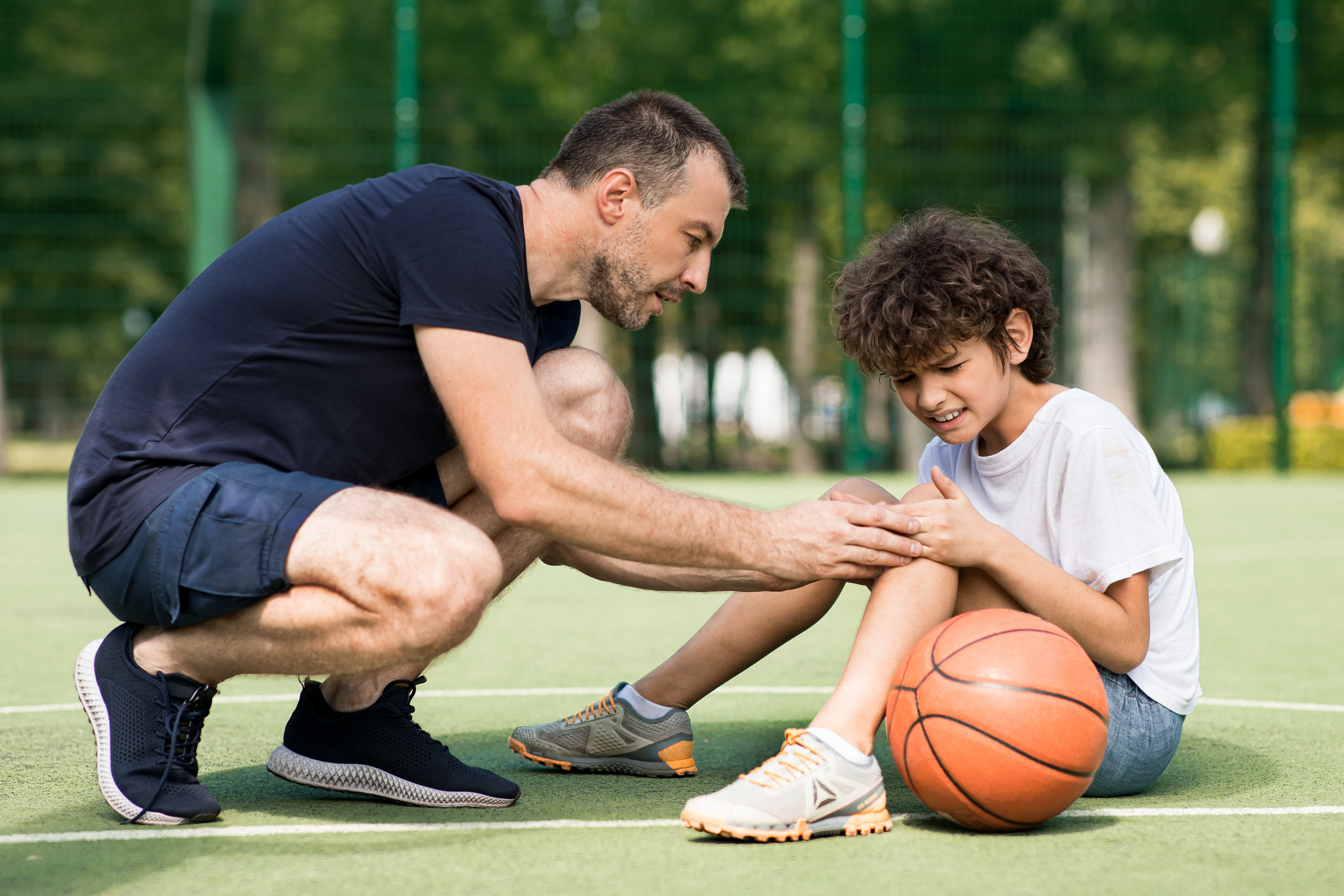Your lateral collateral ligament (LCL) is a narrow and strong ligament located on the outside (lateral aspect) of the knee. It is one of the four ligaments that stabilise the knee joint, alongside the Medial Collateral Ligament (MCL) and the anterior and posterior cruciate ligaments within the knee. It connects the top of the shin bone (tibia) to the bottom of the thigh-bone (femur) and works to resist forces applied to the inside of the knee (varus forces), such as when a ball hits the inside of the leg or knee. This is much less common than impact to the outside of the knee, meaning LCL injuries occur less frequently.
 LCL
injuries occur as a result of stretching and stressing the ligament past the point that it can safely handle. Often this results from excessive
force to the inside of the knee (varus
force)
and various twisting motions at the legs and knees. Examples include:
LCL
injuries occur as a result of stretching and stressing the ligament past the point that it can safely handle. Often this results from excessive
force to the inside of the knee (varus
force)
and various twisting motions at the legs and knees. Examples include:
Those with muscle weakness, ligament laxity or a history of knee injuries are typically at a greater risk of sustaining an LCL injury.
The different levels of severity of injury include a ligament sprain, a partial tear, or a complete rupture. Symptoms can include:
When the injury first occurs, it’s important to stop physical activity and avoid walking on the affected knee where possible. Following the PRICE principles (protection, rest, ice, compression and elevation) can help reduce the initial pain and swelling. If you have had a rupture or significant tear to your LCL, you may require sYou must haveyou have a diagnosis to confirm the extent of your injury, which may involve having an ultrasound, x-ray or MRI imaging. Your podiatrist can help you gradually rebuild the strength in your knee and surrounding muscles, and improve the range of motion in the joint, which will likely be restricted following your injury. This will likely focus on strengthening your quadriceps, hamstrings, calves, hips and pelvic muscles. Your podiatrist will work with you to both help your recovery and reduce the risk of re-injury in the future. This may look at the use of orthotics to control motion at the feet and legs, assessing the stability of your footwear, assessing your walking/running technique, teaching you how to strap your knee when needed, bracing, and physical therapy (strengthening and stretching).

We’ve all had those days — you come home after hours on your feet, kick off your shoes, and notice your ankles look puffier than usual.
Swelling in the feet, ankles, or legs (known medically as edema) isn’t always a reason to panic. It can be as simple as a
salty lunch or a long flight.
But what if it’s happening more often — or seems to be getting worse? Swelling can sometimes be a sign of something more serious. Here’s
what could be going on and when to check in with your doctor.
.jpg)
Every year on October 8th, the world celebrates International Podiatry Day - a day dedicated to
raising awareness about foot health and the vital role that podiatrists play in our overall well-being.

There’s been a lot of buzz about going barefoot. Some say it helps strengthen feet and improves performance, while others warn it can do more harm than good. The truth? It depends on the person, the surface, and how it’s done.

At Perform Podiatry, we specialise in conservative, evidence-based treatments that are safe, effective, and suitable for patients of all ages. One of the most successful options we offer is high-strength salicylic acid therapy.

When most people think of podiatry, they picture orthotics, skin/nail care, or sports injury treatment. But podiatry isn’t just about what’s
happening mechanically in your feet, it’s also about supporting the body’s natural healing processes.
One treatment that’s gaining popularity in podiatric care is acupuncture — a technique with ancient roots and modern
scientific backing.

Even a few minutes of foam rolling per day can make a significant difference in your lower limb health. Focus on the calves, hamstrings, IT
band, and plantar fascia. Combine with stretching and strengthening for best results.
Read this blog to find out more about the benefits of Foam rolling.
Keeping your family on their feet and helping them to walk, run, play and exceed their goals is why we love getting up in the morning.
Ground Floor, One Health Building
122 Remuera Rd, Remuera
Auckland 1050, New Zealand
| MON - FRI | 7:30am – 6:30pm |
| SAT | 8:30am – 4:30pm |
| SUN | Some availability |
Make an Appointment
Online Schedule
Our virtual receptionist is available 24/7 to help with general questions, booking requests, and clinic information, even when our team is busy, or it's after hours.
Whether you're calling us or using our website, you'll get fast assistance any time of day. And if your query needs a personal touch, a member of our team will follow up as soon as possible.
If you’d like to see a podiatrist who speaks your preferred language, just give us a call and we’ll help you book.